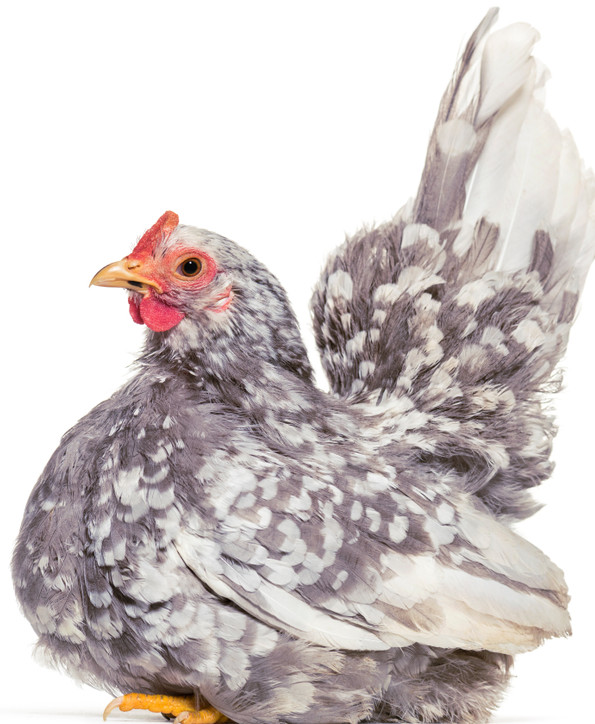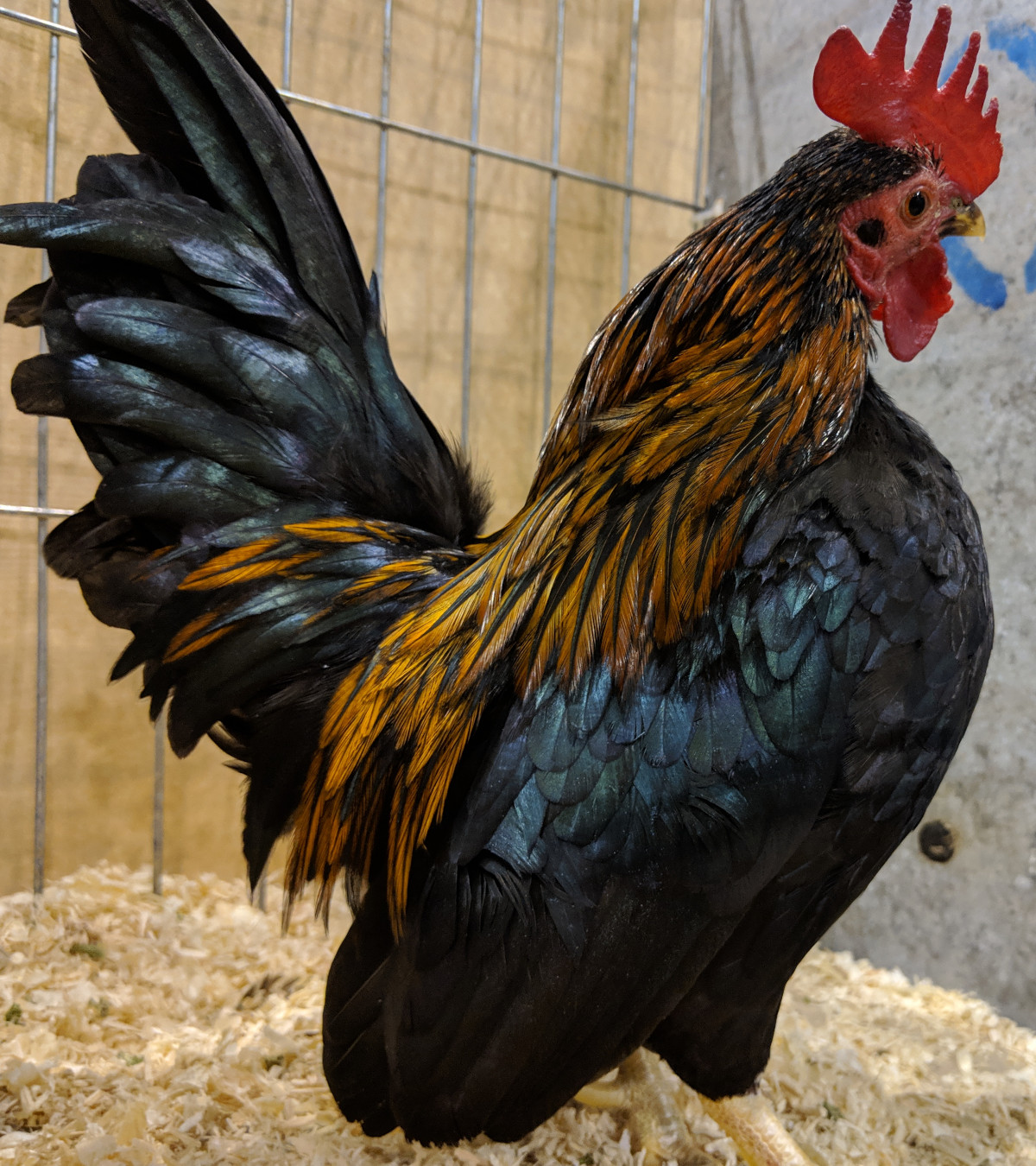
Types, colours and varieties of Japanese bantams
The Japanese bantam is a true bantam and comes only in one size.
Table of Contents
There are three feather types allowed for the Japanese bantam, normal or hard feathered, Silkie feathered or Frizzle feathered.
Japanese bantam feather types:
Below: The normal or hard feathered Japanese bantam.
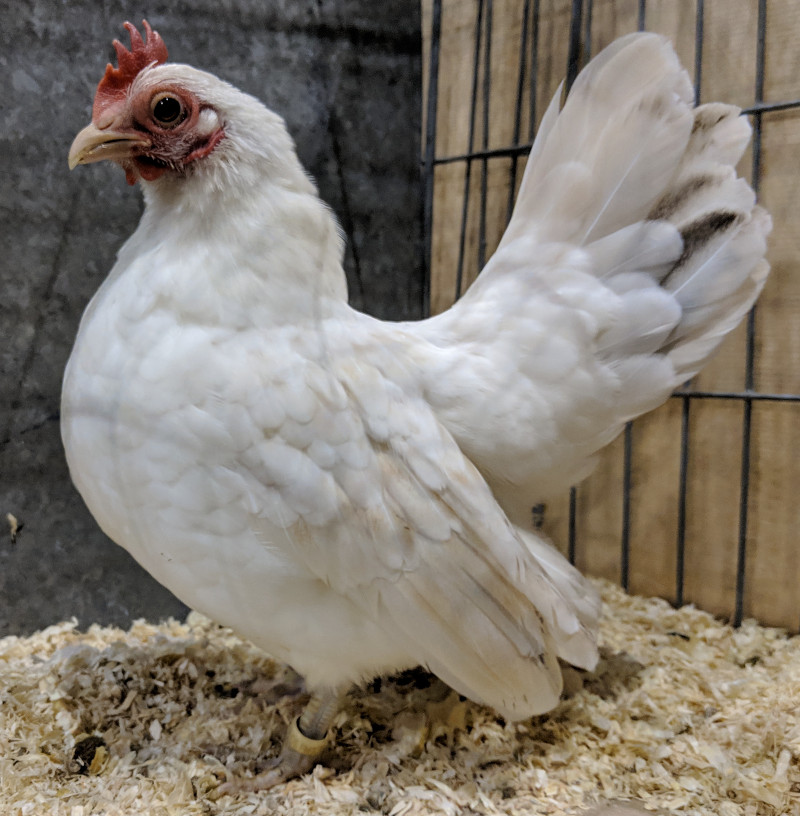
Below: The Fizzle feathered Japanese bantam.
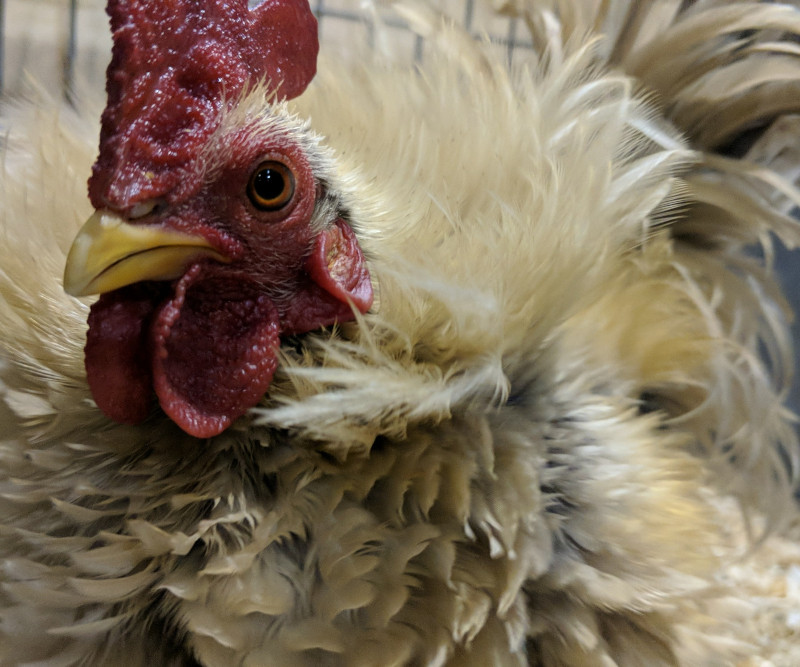
Below: The Silkie feathered Japanese bantam.
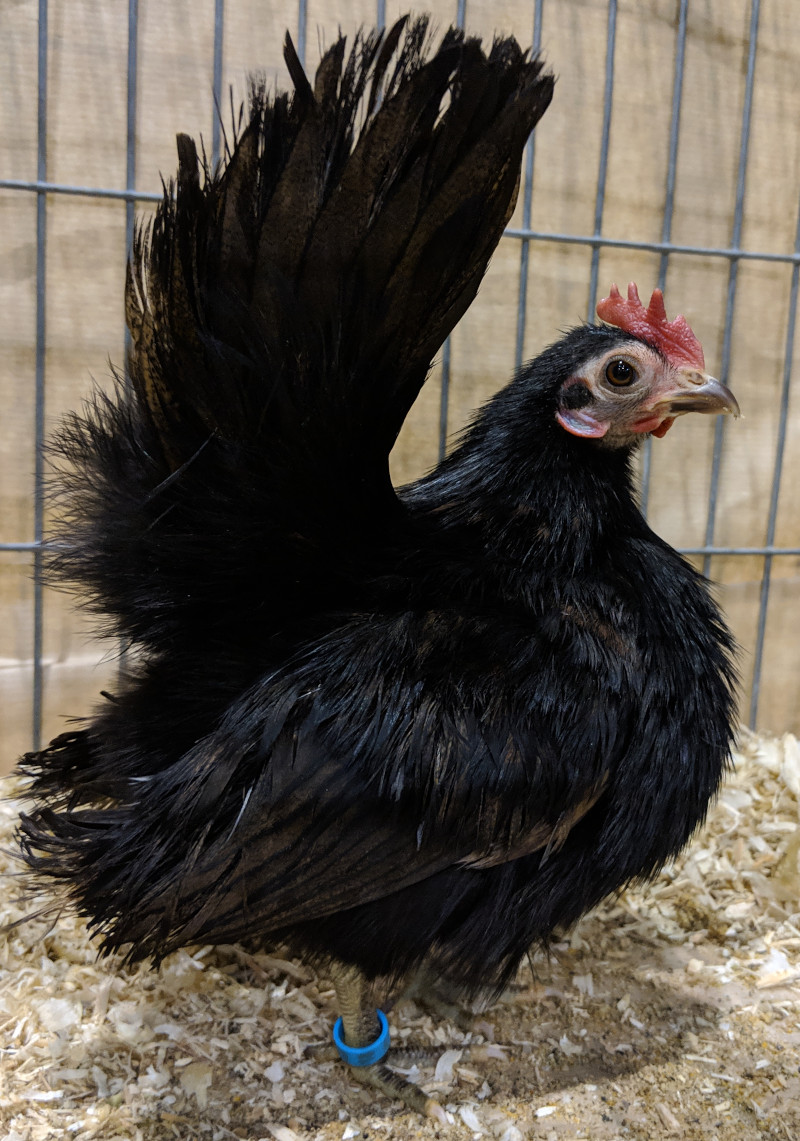
Recognised Colours of Japanese Bantams:
Below is a list of the possible colours from the different standards around the world. Not all are recognised in every standard so check with your local club before exhibition.
White:
The white Japanese bantam should be completely white from head to tail with no brassiness in the feathers or other colours in the feathers. They can be normal or frizzle feathered.
Below: The white Japanese bantam.
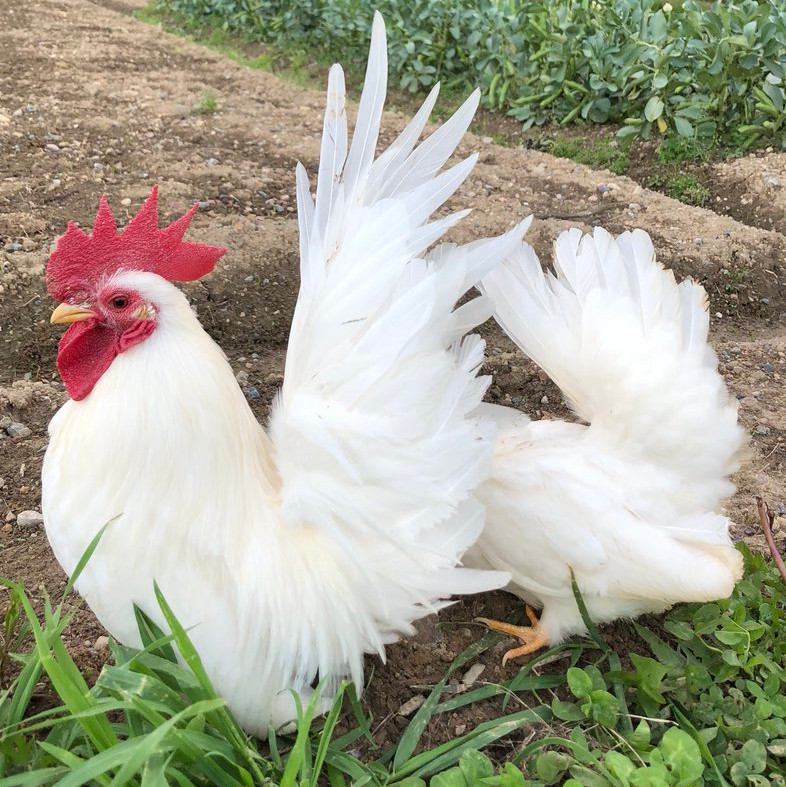
Black:
The black Japanese bantam should have completely black feathers with no other colours in the feathers or shafts. The black feathers should have the green beetle sheen.
Below: The black Japanese bantam.
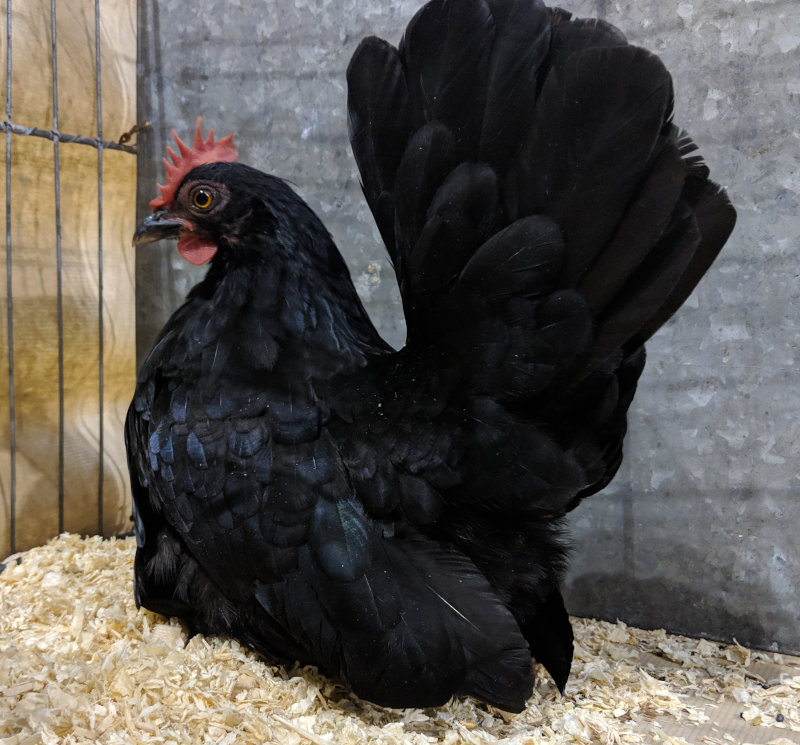
Black Tailed White:
The black tailed white is the classic Japanese bantam colour and is probably the most common. The feathers should be white except for the tail feathers and wing tips which are black. The ideal is a sharp line between the colours with little or no bleeding or smudging.
Below: The black tailed white Japanese bantam.
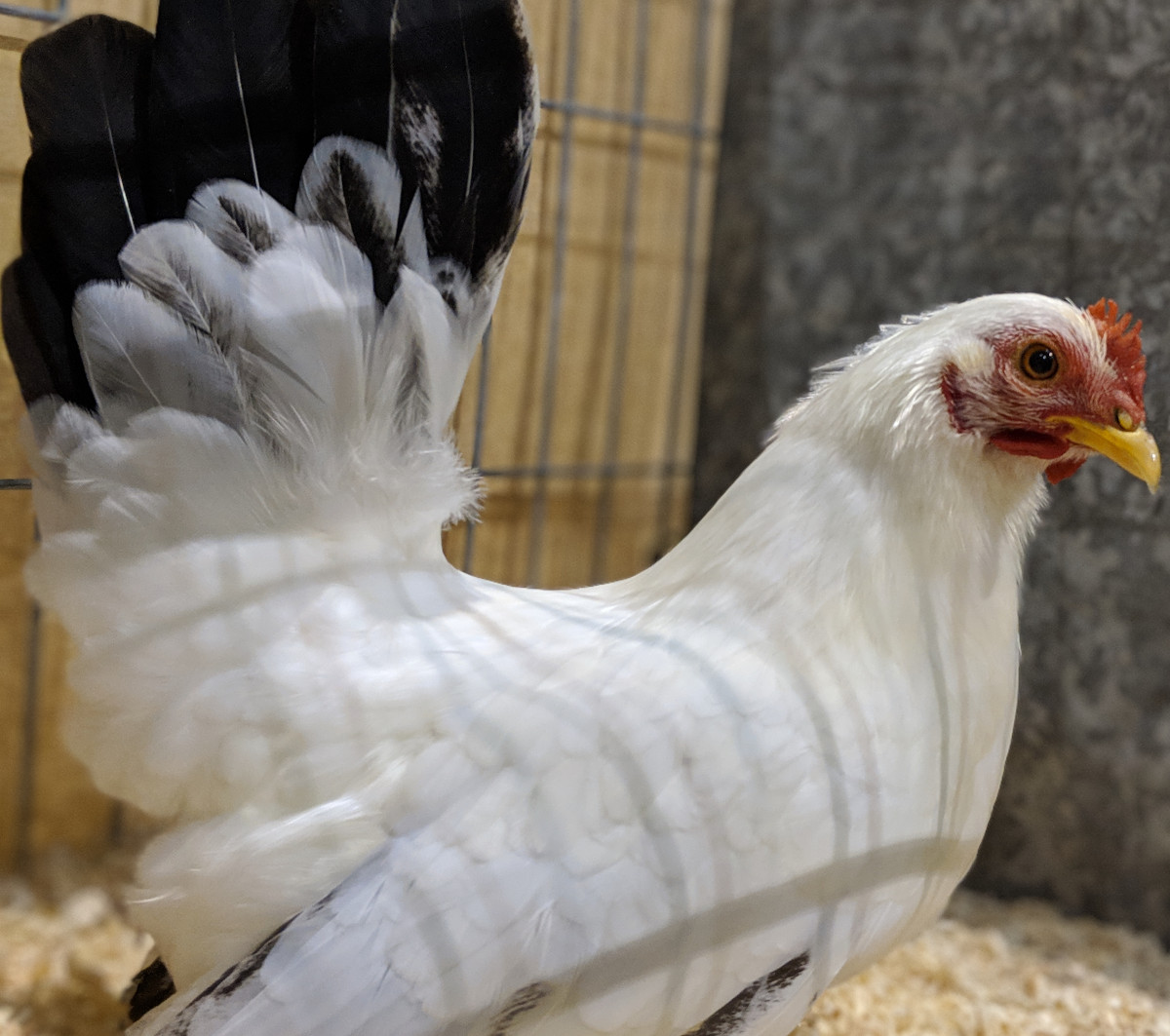
Black Tailed Buff:
The black tailed buff Japanese bantam should have an even orange coloured feathering with a black tail and wing tips. The males often have darker coloured hackles and saddle feathers and the black feathers often have orange shafts and edges.
Below: A black tailed buff Japanese bantam.
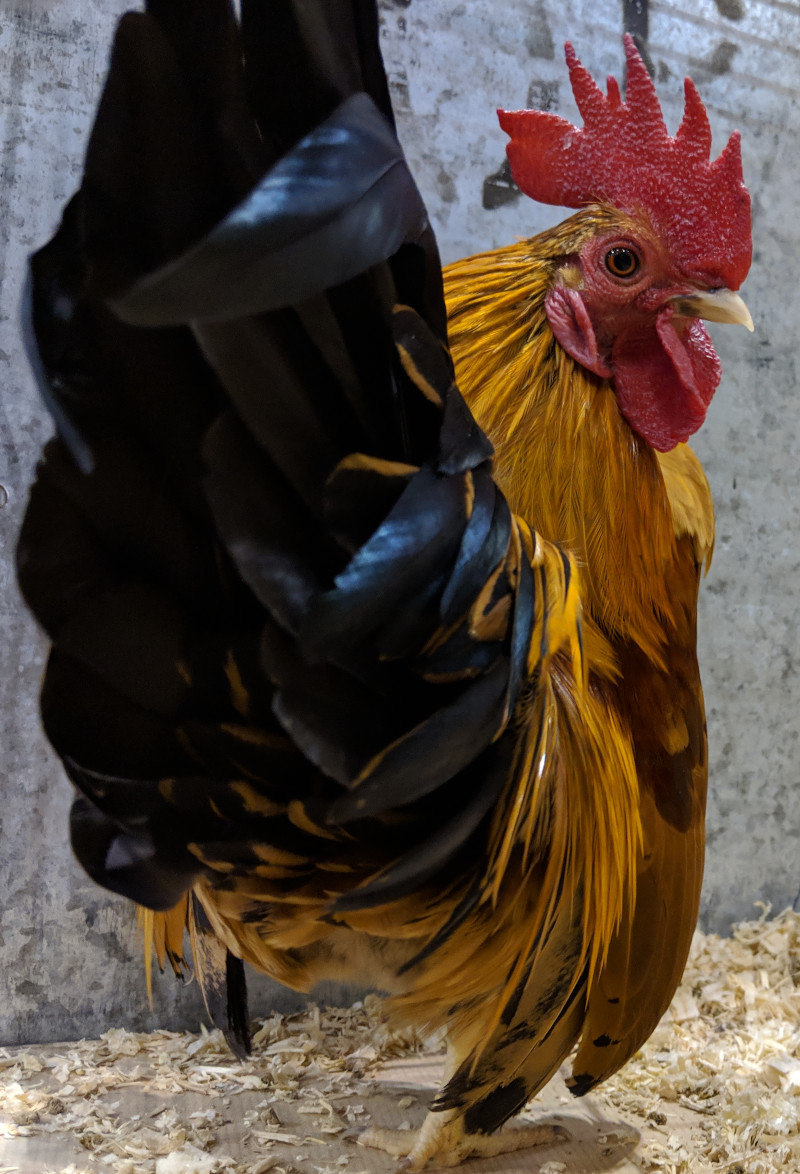
Buff Columbian:
The Buff Columbian Japanese bantam is similar in appearance to the buff tailed black but it should also have a ring of black feathers around the neck and more distinct black wing tips.
Blue:
The blue Japanese bantam should be an even shade blue from head to tail with no black or white feathers. The males carry darker sickle and saddle feathers and the colour is often darker towards the head. Blue is a black mutation and does no breed true.
Below: A trio of blue Japanese bantams.
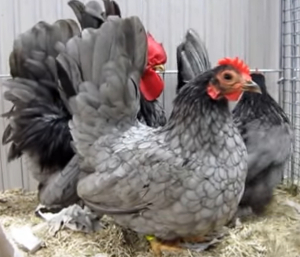
Tri-colour (mille fleur):
The Tri-colour or Mille fluer Japanese bantam has a red ground colour with black and white tips on the feathers. The ideal is to get an even amount of black and white spots but these change with the moult and are difficult to breed.
Below: A tri-colour Japanese bantam.
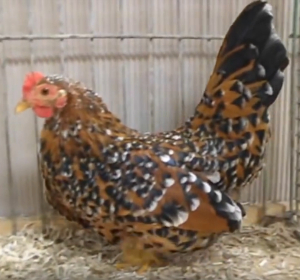
Wheaten:
The wheaten Japanese bantam will have wheat or salmon coloured feathers on the main body with a deeper colour in the hackles and saddle and lighter on the under body. The roosters look more like a black breasted red but the shade is lighter.
Below: A video of a wheaten Japanese bantam hen.
Lavender:
The Lavender Japanese bantam is a pleasing grey blue colour and should be an even shade although the males tend to show lighter hackle and saddle feathers. Lavender breeds true.
Below: A Lavender Japanese bantam hen.
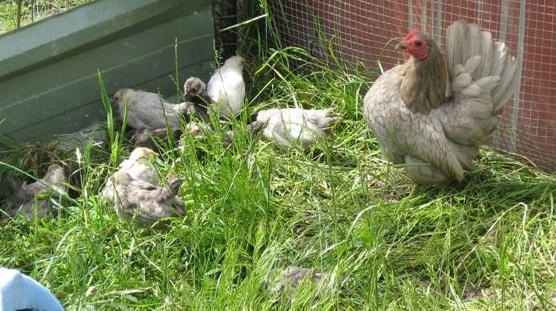
Cuckoo:
The Cuckoo Japanese bantam has alternating black and white barring on the feathers. The ideal is the bars should be as evenly spaced and distinct as possible. The males tend to have clearer markings with the white being more dominant and the hens tend to be darker with wider black bars. Cuckoo is sex linked.
Red:
The Red Japanese bantam is a even and solid red colour from head to tail.
Mottled:
The mottled Japanese bantam has black feathers with white tips. The ideal is completely black feathers with even white points that are well matched in size.
Below: A mottled Japanese bantam.
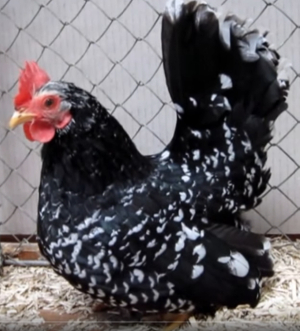
Blue Mottled:
The Blue mottled Japanese bantam has blue feathers with white tips. The more even the mottling on the tips of the feathers the better.
Below: A blue mottled Japanese bantam hen.
